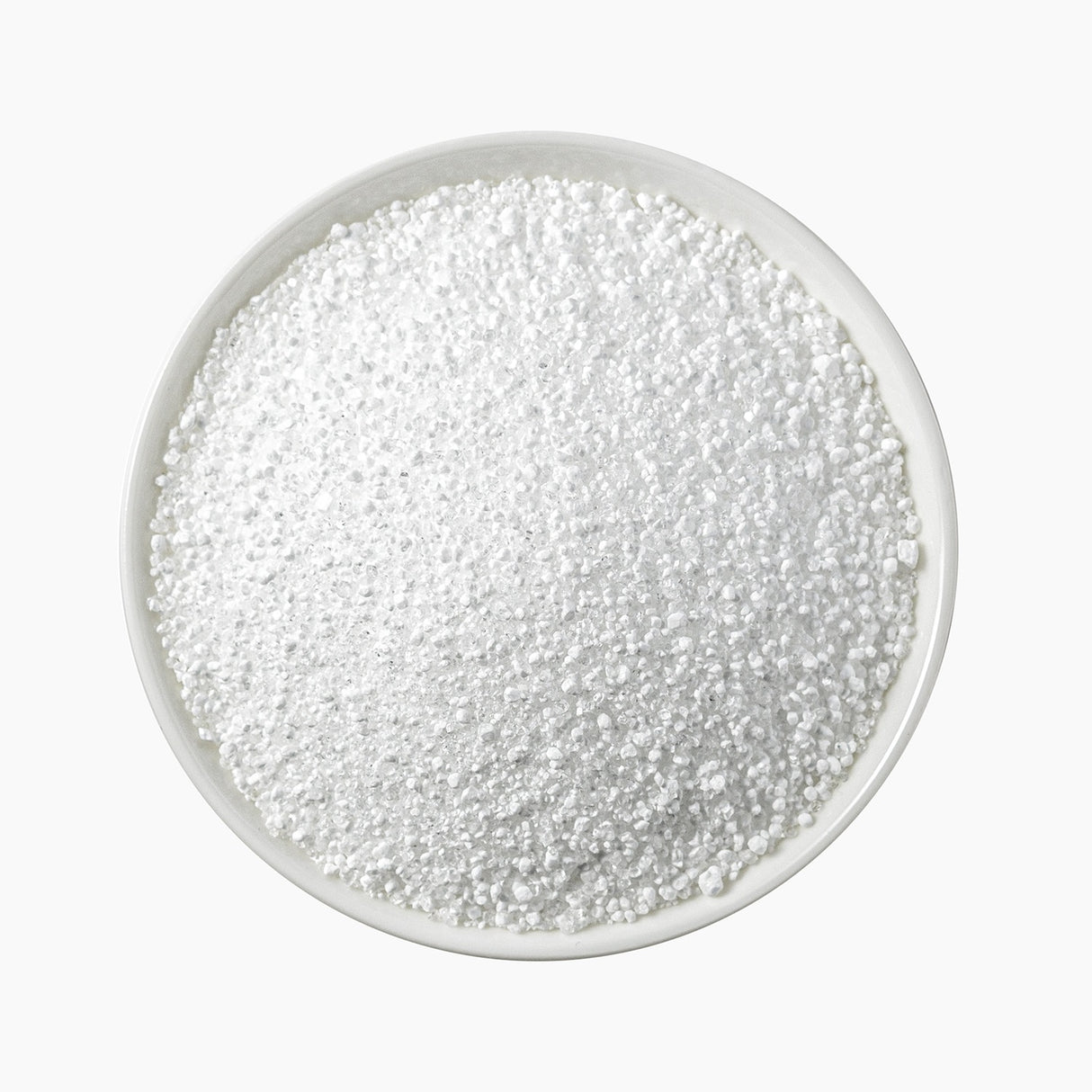Stearic Acid
Couldn't load pickup availability
Description
Stearic acid is a saturated fatty acid commonly derived from animal fats and plant oils. It is a waxy, white, odourless solid at room temperature and is used in various industries, especially in cosmetics, personal care, and manufacturing. Stearic acid functions as a thickener, emulsifier, and softening agent in products such as lotions, soaps, and candles.
Benefits
- Emulsifier and Stabiliser: Helps blend water and oils in formulations, ensuring a smooth, stable texture for creams and lotions.
- Thickening Agent: Adds viscosity to skincare products, making them richer and creamier.
- Softens Skin: Works as an emollient that helps condition and soften the skin in creams and lotions.
- Enhances Foam: In soap-making, stearic acid helps produce a stable, creamy lather.
- Non-Toxic and Biodegradable: Naturally sourced and environmentally friendly, making it ideal for eco-conscious products.
Uses
- Cosmetics and Skincare: Used in creams, lotions, and moisturisers as a thickener and stabiliser. It helps products maintain their form and prevents separation.
- Soap Making: Provides hardness to soap bars and enhances their lather.
- Candles: Serves as a hardening agent to help candles maintain their shape.
- Lubricants: Used in the manufacturing of lubricants and greases to improve texture and consistency.
- Food Industry: Employed in some food products as an emulsifier and a release agent, though usage is minimal compared to its non-food applications.
Physical + Chemical Properties
- Appearance: White, waxy solid.
- Odour: Odourless.
- Molecular Formula: C18H36O2.
- Melting Point: 69-70°C.
- Boiling Point: 361°C.
- Solubility: Insoluble in water, soluble in alcohol and oils.
- pH (in water): Neutral (pH 7).
Caution
- Skin Sensitivity: Although generally safe for topical use, some individuals with sensitive skin may experience irritation or breakouts.
- Inhalation: In powder form, inhalation of stearic acid dust may cause respiratory irritation. Use appropriate protective equipment during handling.
- Eye Contact: Can cause mild irritation if it comes in contact with the eyes.
- Non-Toxic: It is generally regarded as safe for cosmetic and industrial use, but ingestion in large quantities is not recommended.
Stash It Right
- Conditions: Store in a cool, dry place away from direct sunlight and moisture. Keep the container tightly closed to prevent contamination and maintain product integrity.
- Temperature: Ideal storage temperature is between 15 °C and 30 °C (59 °F and 86 °F)




